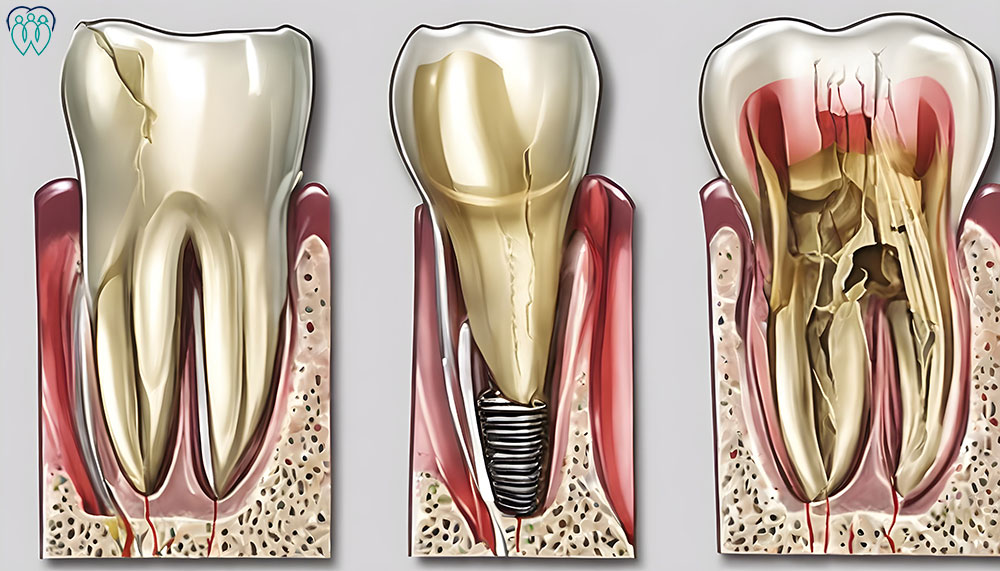
Vertical Root Fractures: Symptoms, Causes, and Treatments
Though we often wish our teeth were as indestructible as metal, they are, unfortunately, prone to wear and tear, including various types of fractures. One such issue is the vertical root fracture, a condition we’ll explore in detail, covering its symptoms, causes, and available treatments.
A vertical root fracture presents as a vertical crack that starts at the tooth’s root and extends towards its crown. Typically elusive, these fractures rarely show signs or symptoms early on but can eventually lead to infection in the surrounding bone and gum, resulting in noticeable and often painful symptoms for the patient.
Why Do Vertical Root Fractures Occur?
These fractures are predominantly found in teeth that are either inherently weak, have undergone root canal treatments, or have other restorative work such as crowns. Even healthy teeth aren’t immune, with hard foods or materials like ice posing a risk. Notably, a vertical root fracture could occur during a root canal procedure, indicated by sudden pain, a popping sound, or bleeding in the canal.
Identifying Symptoms of a Vertical Root Fracture
The varied nature of symptoms makes vertical root fractures challenging for dental professionals to diagnose. Indicators may include:
- Mild pain upon biting.
- Visible cracks under special lighting or dye.
- The presence of a draining sinus tract next to the tooth, resembling a boil or ulcer, signaling an underlying infection.
- A detachment pocket between the gum and the tooth near the fracture site.
Diagnosis might occur during a root canal if a crack is visible. Post-procedure, an X-ray might reveal a fracture with a characteristic “J” shape, or transillumination (shining a light through the tooth) may be used to detect fractures.
Treatment Options for Vertical Root Fractures
Treatment can vary; in some cases, special cements are utilized to bond the tooth or halt fracture progression. However, tooth extraction remains the most common solution, essential for preventing chronic infection that could compromise bone needed for future dental implants.
Preventive Measures
To mitigate the risk of vertical root fractures, consider the following steps:
- Avoid root canal treatments when possible by maintaining regular dental check-ups for early problem detection*.
- If a root canal is necessary, discuss with your endodontist the techniques used and strategies to minimize fracture risk.
If you’re experiencing symptoms consistent with a vertical root fracture, consult with your dental professional. They can help identify the cause of your symptoms and provide appropriate treatment to maintain your oral health, allowing you to smile more freely and worry less.
Seeking the Right Specialist: When to See an Endodontist for Root Fractures
For issues related to vertical root fractures, the type of dentist best suited to diagnose and treat the condition is an endodontist. Endodontists are dental specialists who focus on the diagnosis, prevention, and treatment of diseases and injuries of the dental pulp and the tissues surrounding the root of a tooth. Their advanced training, typically an additional two or more years beyond dental school, equips them with the expertise to perform complex procedures, including root canal treatments, endodontic surgery, and treatments for dental trauma, which are often involved in managing vertical root fractures.
Endodontists have specialized equipment and techniques to accurately diagnose and treat vertical root fractures, which are often challenging to detect. Their expertise in working within the interior of the tooth and their focus on preserving natural teeth make them the ideal professionals for addressing this type of dental problem.



